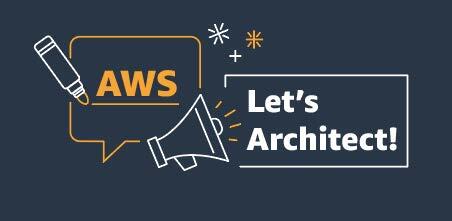AWS Architecture Blog
Tag: Let’s Architect
Top Architecture Blog Posts of 2024
Well, it’s been another historic year! We’ve watched in awe as the use of real-world generative AI has changed the tech landscape, and while we at the Architecture Blog happily participated, we also made every effort to stay true to our channel’s original scope, and your readership this last year has proven that decision was […]
Let’s Architect! Serverless developer experience in AWS
Accelerate your serverless feedback loop with game-changing AWS developer tools: generate tests with AI, visualize DynamoDB schemas locally, optimize Lambda memory, and more—all within a streamlined local IDE experience.
Let’s Architect! Modern data architectures
Data is the fuel for AI; modern data is even more important for generative AI and advanced data analytics, producing more accurate, relevant, and impactful results. Modern data comes in various forms: real-time, unstructured, or user-generated. Each form requires a different solution. AWS’s data journey began with Amazon Simple Storage Service (Amazon S3) in 2006, […]
Let’s Architect! Building multi-tenant SaaS systems
Software as a Service (SaaS) applications offer a transformative solution for businesses worldwide, delivering on-demand software solutions to a global audience. However, building a successful SaaS platform demands on meticulous architectural planning, especially given the inherent challenges of multi-tenancy. It’s also essential to ensure that each tenant’s data remains isolated and protected from unauthorized access […]
Let’s Architect! Designing Well-Architected systems
The design of cloud workloads can be a complex task, where a perfect and universal solution doesn’t exist. We should balance all the different trade-offs and find an optimal solution based on our context. But how does it work in practice? Which guiding principles should we follow? Which are the most important areas we should […]
Let’s Architect! Migrating to the cloud with AWS
In today’s digital world, businesses are increasingly turning to the cloud for its scalability, agility, and cost-effectiveness. Migrating your data center to the cloud can be a daunting task, but with the right approach and tools, it can be a successful journey. This Let’s Architect! blog post will guide you through the process of migrating […]
Let’s Architect! Learn About Machine Learning on AWS
A data-driven approach empowers businesses to make informed decisions based on accurate predictions and forecasts, leading to improved operational efficiency and resource optimization. Machine learning (ML) systems have the remarkable ability to continuously learn and adapt, improving their performance over time as they are exposed to more data. This self-learning capability ensures that organizations can […]
Let’s Architect! Discovering Generative AI on AWS
Generative artificial intelligence (generative AI) is a type of AI used to generate content, including conversations, images, videos, and music. Generative AI can be used directly to build customer-facing features (a chatbot or an image generator), or it can serve as an underlying component in a more complex system. For example, it can generate embeddings […]
Top Architecture Blog Posts of 2023
2023 was a rollercoaster year in tech, and we at the AWS Architecture Blog feel so fortunate to have shared in the excitement. As we move into 2024 and all of the new technologies we could see, we want to take a moment to highlight the brightest stars from 2023. As always, thanks to our […]
Let’s Architect! Tools for developers
In the software development process, adopting developer tools makes it easier for developers to write code, build applications, and test more efficiently. As a developer, you can use various AWS developer tools for code editing, code quality, code completion, and so on. These tools include Amazon CodeGuru for code analysis, and Amazon CodeWhisper for getting coding recommendations powered by machine learning algorithms.
In this edition of Let’s Architect!, we’ll show you some tools that every developer should consider including in their toolkit.


